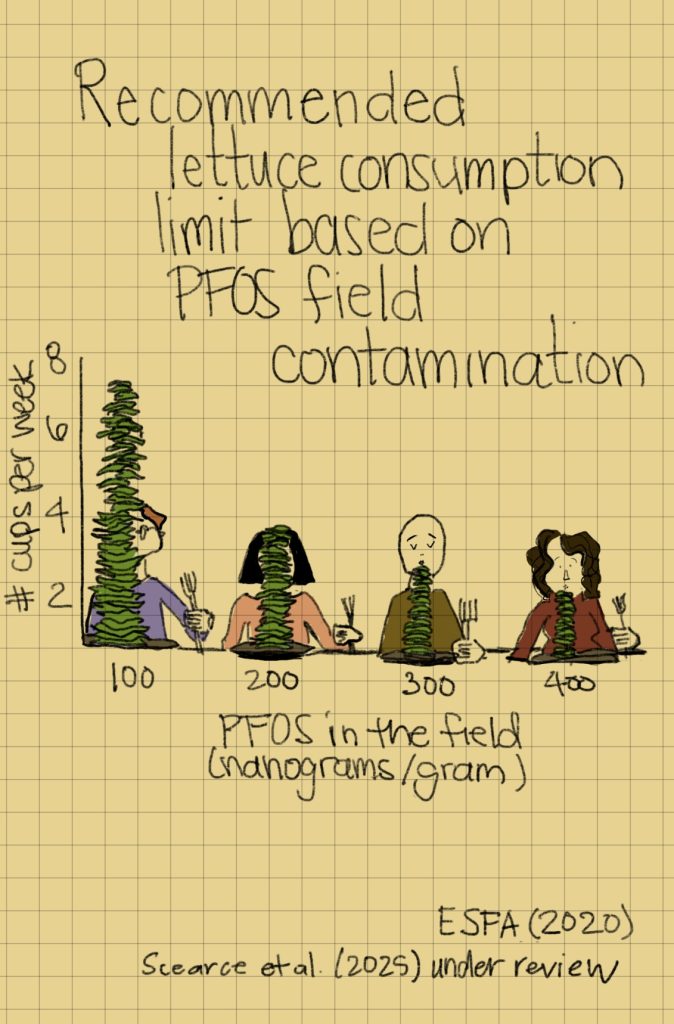Lettuce Eat Safely
By Alex Scearce

This piece aims to place the scale of PFOS contamination of agricultural soil into context. The data presented here are based on results from a study conducted for my Masters thesis “Uptake Takeaways: Soil-to-Crop Movement of Per- and Polyfluoralkyl Substances (PFAS) in a Paired Field and Greenhouse Study”, which took place on a contaminated farm in Unity, Maine. In this study, our team sought to quantify uptake of PFAS from contaminated soil to edible portions of lettuce and two other crops to support farmer and policymaker understandings of the risk associated with farming on contaminated land. This data visualization features the number of lettuce cups that a 70 kg person could safely consume based on what our research taught us about the transfer of PFOS-contaminated soil to lettuce and using health standards set by the European Food Safety Authority (2020). These findings are not recommendations and should not be extrapolated beyond this field setting, as many questions remain about the mechanisms that drive PFAS uptake in a field. Results from this study are under review for publication, but results from the paired greenhouse study may be found here:
Scearce, A. E., MacRae, J. D., Goossen, C. P., Zhang, Y.-J., Holt, K. P., & Schattman, R. E. (2025). Uptake of per- and polyfluoroalkyl substances (PFAS) into lettuce (Lactuca sativa), tall fescue (Schedonorus arundinaceus) and tomato (Solanum lycopersicum): A greenhouse experiment evaluating bioconcentration factors and testing the effect of intercropping. Environmental Advances, 100629.
https://doi.org/10.1016/j.envadv.2025.100629

